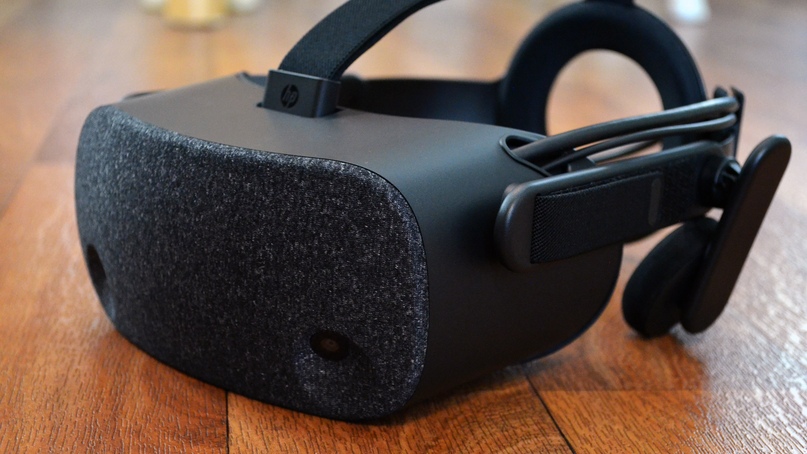HP Reverb - New VR Set Review

A family of virtual reality sets from a variety of manufacturers under the single flag of Windows Mixed Reality has been around for a couple of years, and finally, HP is making its attempt to release the second generation of this line - at least in terms of the helmet itself (HMD).
Before that, we saw almost identical helmets from Acer, Asus, Dell, Lenovo, Samsung and HP - each of them (except for Odyssey) has identical 1440x1440 panels, they all use the same tracking system from Microsoft and share common controllers. Of course, it is worth mentioning the Samsung Odyssey +, which stands out from the general line, demonstrates higher performance, but HP Reverb really raises the bar to a new level, at least in terms of displays.

')
The resolution of each of the two panels in the HP Reverb is 2160x2160. This is a big leap not only for the WMR family of helmets, but also in comparison with all the other modern VR helmets on the consumer market. (Of course, you shouldn’t discount the Pimax 8K / 5K +, which has high-resolution displays, but there we see a “smearing” of this large number at a rather large viewing angle (170 horizontal), which reduces the “concentration” of pixels).

Therefore, if your main enemy is the so-called screen door effect (when single pixels stand out clearly and you feel as if you are looking at the screen through a mosquito net), I advise you to pay attention to the HP Reverb helmet. SDE does not disappear completely (for this, according to Michael Abrash, permission from 4Kx4K is required), but the difference is significant.

Of course, such a high resolution display requires high computing power, so even owners of a GTX 1080 will experience performance problems when using a helmet at full resolution.

The helmet connects to the PC via USB 3.0 and DisplayPort, and the cable itself can be disconnected from the HMD without having to disassemble the latter.

The weight of the helmet is kept at the same level as the others and is about 500 g, taking into account the built-in headphones, as we have seen, for example, on the Oculus Rift.

The design as a whole is a lot like the Oculus Rift CV1. Semi-rigid mount with Velcro strap on the sides and on top of the head. The same position of the microphone (which, by the way, is even better than in the rift) and headphones. However, on this helmet you will not find the IPD regulator physically changing the distance between the lenses.

Sweetspot (the area in the center of the field of view without blur) is quite small, so when you change the object of attention, you will have to move your head more than your eyes.
The most discussed problem of the helmet was the presence of the Mura effect - unevenness in the brightness of the screen in different parts of it (see the example in the picture below). This is especially noticeable on monochromatic brightly lit scenes. Contrary to rumors, this problem was not fixed by the developers after the release, and it should be taken into account when making a decision to buy a helmet.

Since the HP Reverb uses LCD panels, another drawback compared to OLED is not deep enough black levels. And even if we compare the helmet from HP with competing Rift S and Valve Index, then black is “even less black”. The contrast in general is not as high compared to other helmets.
All other aspects of WMR remained at the same level as they were at the time of the launch of the first generation. Tracking is still performed by two cameras and shows far from the best performance, and controllers are all the same indecency as on the other VR sets from WMR. And the saddest thing is the lack of Microsoft’s interest in improving the tracking and WMR controllers, so you shouldn’t hope for an upgrade soon.

Who could end up looking at this helmet? First of all, those who need high resolution. Perhaps those who have HTC Vive and are eager to upgrade (since HP Reverb can be used with controllers from Vive). The helmet will appeal to lovers of racing and flight simulators, as well as everyone who works with text and small details in virtual reality, but is not ready to lay out several thousand dollars for a Varjo VR helmet.
Source: https://habr.com/ru/post/452414/
All Articles